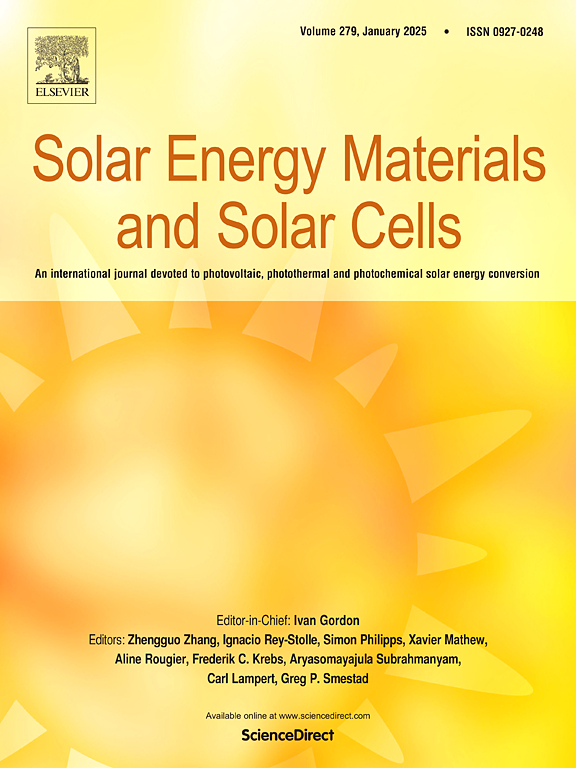Zn2+杂质对MgCl2-NaCl-KCl熔盐结构和热物理性质的影响:MD模拟与实验研究
IF 6.3
2区 材料科学
Q2 ENERGY & FUELS
引用次数: 0
摘要
熔融氯盐被认为是很有前途的传热和储能介质在热储能(TES)系统。锌离子是含镁氯盐中重要的杂质,但其对盐的结构和性能的影响机制尚不明确。通过分子动力学模拟(MD)和实验研究了杂质Zn2+对熔融MgCl2-NaCl-KCl盐的结构和热物理性质的影响。基于Born-Mayer-Huggins (BMH)势的MD计算结果与实验数据吻合较好。随着Zn2+的增加,锌离子与其他阳离子之间的距离减小,锌离子容易形成[ZnCl5]3-络合物,因此整体结构趋于致密,导致密度增大,比热容略有减小。由于锌离子配合物阻碍了离子的迁移,随着Zn2+的增加,离子的自扩散系数降低,热导率降低,粘度增加。得到了热物性、杂质含量与温度之间的相关关系,密度和粘度随Zn2+的增加呈线性增加,比热容和导热系数呈线性递减。此外,锌离子络合物破坏了盐的短程有序结构,从而降低了盐的熔点。本研究强调,氯盐中锌离子杂质的含量应保持在最低水平,以优化其性能。本文章由计算机程序翻译,如有差异,请以英文原文为准。
Influence of Zn2+ impurities on structure and thermophysical properties of MgCl2-NaCl-KCl molten salt: MD simulation and experimental research
Molten chloride salts are considered promising media for heat transfer and energy storage in thermal energy storage (TES) systems. Zinc ions are significant impurities in chloride salts with magnesium, but their influence mechanism on structure and properties of salts remains limited. This study explores the influence of impurity Zn2+ on the structure and thermophysical properties of the molten MgCl2-NaCl-KCl salt by molecular dynamics simulations (MD) and experiment. The properties calculated by MD based on Born-Mayer-Huggins (BMH) potential have good agreement with experimental data. With the increment of Zn2+, the distance between zinc ion and other cations decreases, and zinc ions tend to form [ZnCl5]3- complex, so the overall structure tends to be compact, resulting in the increment of density and slightly decrement of specific heat capacity. Since zinc ion complex hinders ion migration, the self-diffusion coefficients of ions are reduced by Zn2+ increasing, and then the thermal conductivity decreases and viscosity increases. The correlations between thermophysical properties, impurity content, and temperature are obtained, and the density and viscosity have linear increment with Zn2+ increasing, while specific heat capacity and thermal conductivity have linear decrement. Additionally, zinc ion complex disrupts the short-range ordered structure therefore lowers the melting point of the salt. This research highlights that the chloride salts should be kept with minimal zinc ion impurities to optimize the performance.
求助全文
通过发布文献求助,成功后即可免费获取论文全文。
去求助
来源期刊

Solar Energy Materials and Solar Cells
工程技术-材料科学:综合
CiteScore
12.60
自引率
11.60%
发文量
513
审稿时长
47 days
期刊介绍:
Solar Energy Materials & Solar Cells is intended as a vehicle for the dissemination of research results on materials science and technology related to photovoltaic, photothermal and photoelectrochemical solar energy conversion. Materials science is taken in the broadest possible sense and encompasses physics, chemistry, optics, materials fabrication and analysis for all types of materials.
 求助内容:
求助内容: 应助结果提醒方式:
应助结果提醒方式:


